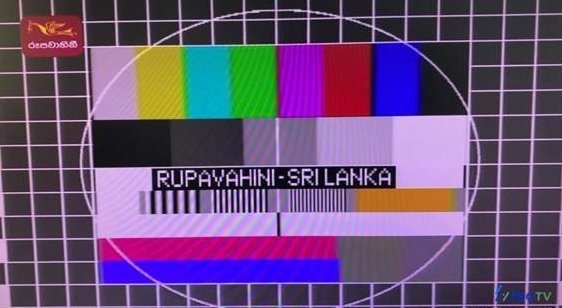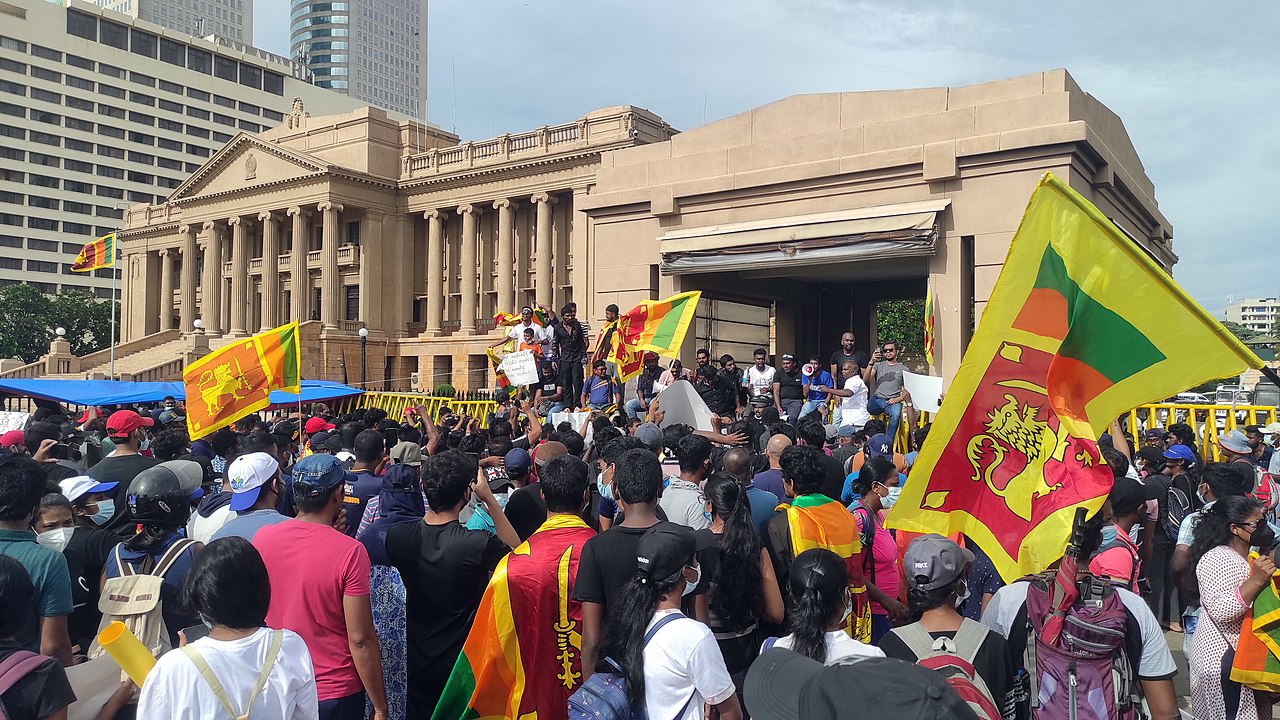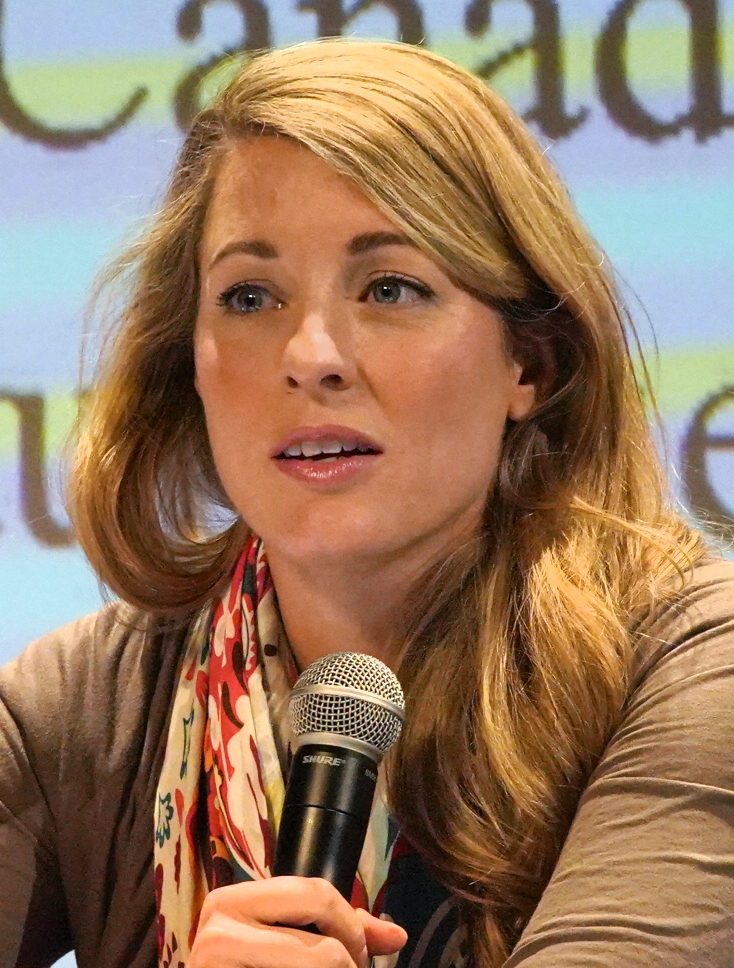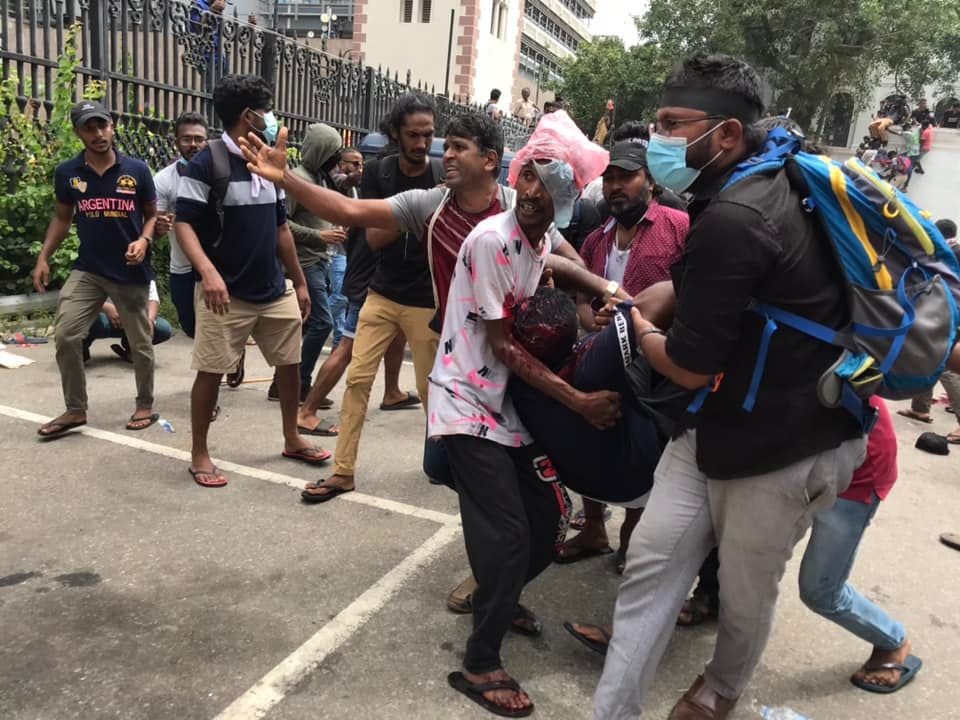BREAKING – Protestors take over Sri Lanka’s national television broadcaster
13 July 2022
Protestors have taken over the Sri Lanka Rupavahini Corporation, the national television network of the island, after they stormed its offices just moments ago.
A protestor was seen addressing the cameras earlier.
The network has now gone off air.

Protestors have taken over the Sri Lanka Rupavahini Corporation, the national television network of the island, after they stormed its offices just moments ago.
A protestor was seen addressing the cameras earlier.
The network has now gone off air.
Sri Lanka’s Road to Ruin Was Political, Not Economic

Writing in Foreign Policy, Neil Devotta, professor of international affairs at Wake Forest University, explains that “the roots of the current crisis lie with ethnocracy” which has led a country from meritocracy to kakistocracy – governance by a country’s worst citizens.
Quoting a Sri Lankan newspaper, Devotta writes, “drug dealers, fraudsters, murderers, rapists, bootleggers and cattle rustlers’ control politics, and they have bankrupted a country with so much potential”.
In explaining the rise of Sri Lanka as an ethnocratic state, he begins with the premiership of Prime Minister S.W.R.D. Bandaranaike which saw the implementation of the country’s most divisive and racist legislation – the 1956 Sinhala Only Act.
This ethnonationalism deepened in Sri Lanka and proved fertile ground for the Rajapaksa’s which oversaw the brutal ending of the armed conflict.
“Being anti-minority became patriotic, which is why the Rajapaksas could combine their Sinhalese Buddhist credentials with cavalier racism to keep winning elections for two decades. The role they played in defeating the separatist and terrorist Liberation Tigers of Tamil Eelam only bolstered these credentials” writes Devotta.
Despite this popularity, a series of poor decisions saw the traditional supporter base of the Rajapaksas turn against them. As Devotta notes:
He further adds:“What is striking is that it took the worst economic crisis in the island’s history—not a popular commitment to ethnoreligious tolerance and pluralism or the need to account for alleged war crimes committed against Tamils or baseless attacks on Muslims—that made the island’s predominantly Sinhalese Buddhists sour on the Rajapaksa family”.
“In that sense, what the aragalaya proved is that nationalist sentiment cannot overcome hunger and scarcity. The Rajapaksas are among the most recent autocrats to discover this”.
Commenting on Rajapaksa’s refusal to relinquish power, Devotta writes:
“Kleptocrats seek to stay in power because they fear being held accountable. Gotabaya Rajapaksa refused to leave for so long because he gave up his American citizenship to run for the presidency and because once out of power he and his family could finally be charged for their predatory past”.
He further notes that currently, “there is such disgust with nearly everyone in Parliament that the legislature may be pressured to dissolve itself so new parliamentary elections, which need not be held until 2025, can be held early”.
He concludes by stating that:
“The ‘Go Home Gota’ campaign has generated discussions about building a future for all on the island. Perhaps the common suffering Sri Lankans are experiencing could be the antidote to the island’s ethnocracy. But given the island’s sorry past, only a fool would bank on that outcome”.
Read the full piece at Foreign Policy
Canada's Foreign Minister stresses urgent political and economic reforms in Sri Lanka

Canadian Minister of Foreign Affairs, Melanie Joly, stressed the need for urgent political and economic reform in Sri Lanka.
Referring to the protests on 9 July, Joly tweeted that “Canada supports a peaceful, constitutional path forward that supports urgent action on economic and political reform.”
On 9 July, demonstrators stormed the President’s official residence and set the Prime Minister’s home ablaze. As a result of the protests, Prime Minister Ranil Wickremesinghe agreed to resign. Whilst President Gotabaya Rajapaksa has attempted to flee the island.
Joly highlights that the demonstrations were a clear indication of a “desire for a better Sri Lanka.”
In the past few months, Sri Lanka has seen a rise in anti-government protests in response to the ongoing economic crisis. Activists have criticized the movement for neglecting the demands of Eelam Tamils. They have highlighted that without demilitarization in the North-East or accountability for war crimes, a better Sri Lanka for everyone will not be possible.
In a further tweet, Joly denounced violence against journalists and peaceful protesters, emphasizing that “the right to protest peacefully must be upheld.”
In a statement, the Sri Lankan army admitted to opening fire during the protests that took place on Saturday. Footage was also captured by demonstrators depicting security forces brutalizing both protesters and journalists.
A statement from the Sri Lankan army admitted that soldiers opened fire during Saturday’s protest, after video clips of the shootings were widely shared, but denied there was any “intent on causing deliberate harm to the protesters”.
In a statement entitled ‘The army sets the record straight about Saturday firing’, the military said its attention “has been drawn to a few video clips going viral”.
Video footage shared earlier today shows heavily armed soldiers and masked soldiers, lining up, taking aim and firing at the walls of the presidential palace, with protestors clearly visible on the other side. Bullets and debris ricocheted just inches away from the demonstrators, who would go on to storm Gotabaya Rajapaksa’s official residence.
Sri Lankan security forces open fire before protesters storm President’s house https://t.co/o6zo8drtrp pic.twitter.com/djy7nxS38V
— Tamil Guardian (@TamilGuardian) July 10, 2022
“The Army categorically denies having opened fire towards the protesters, but fired a few rounds to the air and the sidewalls of the main gate entrance to the President's House compound as a deterrent,” it claimed.
“Firing into the air and sidewalls do not therefore necessarily mean that those Army personnel on duty were intent on causing deliberate harm to the protesters.”
Separate footage captured by the protestors shows several incidents of brutality by the security forces, with journalists among those assaulted.

Read more: Protesters shot and journalist assaulted by Sri Lankan security forces in Colombo

No comments:
Post a Comment